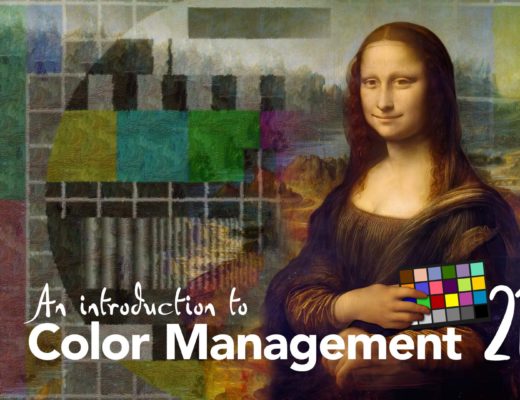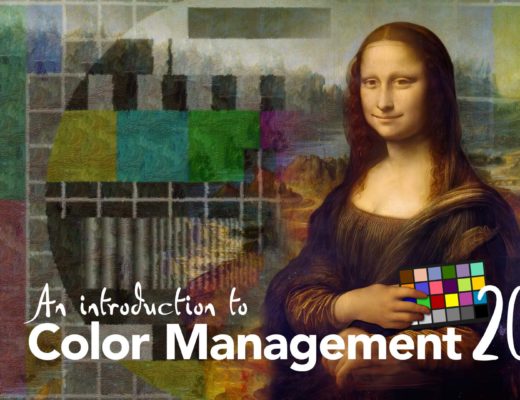Over the past few months of interviews many of the editors have mentioned working with previs editors. (Ant-man and the Wasp, Rampage, Kingsman: The Golden Circle and many of the other films mentioned below) Nearly all of them mentioned working with the internationally-acclaimed previs company The Third Floor. It roused my curiosity about the relationship between the previs editor – who is often on a project long before the picture editor – and the picture editors. How are the skillsets different and what are the previs editors doing to facilitate the production?
Art of the Cut is brought to you by our friends at Frame.io.Video collaboration for the 21st century Read all of the AOTC interviews or learn more about Frame.io |
We spoke to four of The Third Floor’s previs editors. John Caldwell’s past credits as previs editor include X-Men: Days of Future Past, Deadpool 2, Suicide Squad and Hercules. Ian Differ’s past credits as previs editor include Star Wars: The Last Jedi, Beauty and the Beast and was Co-editor on Guy Ritchie’s Revolver. Siân Fever’s past credits as Previs Editor include Mission Impossible: Fallout, Tomb Raider and Wonder Woman, and is currently working on The Crown as Assistant Editor. Krisztian Majdik’s past credits as previs editor include Avengers: Infinity War, Captain America: Civil War and, as picture editor, the critically acclaimed New Zealand film Sunday.
(This interview was transcribed with SpeedScriber. Thanks to Martin Baker at Digital Heaven)

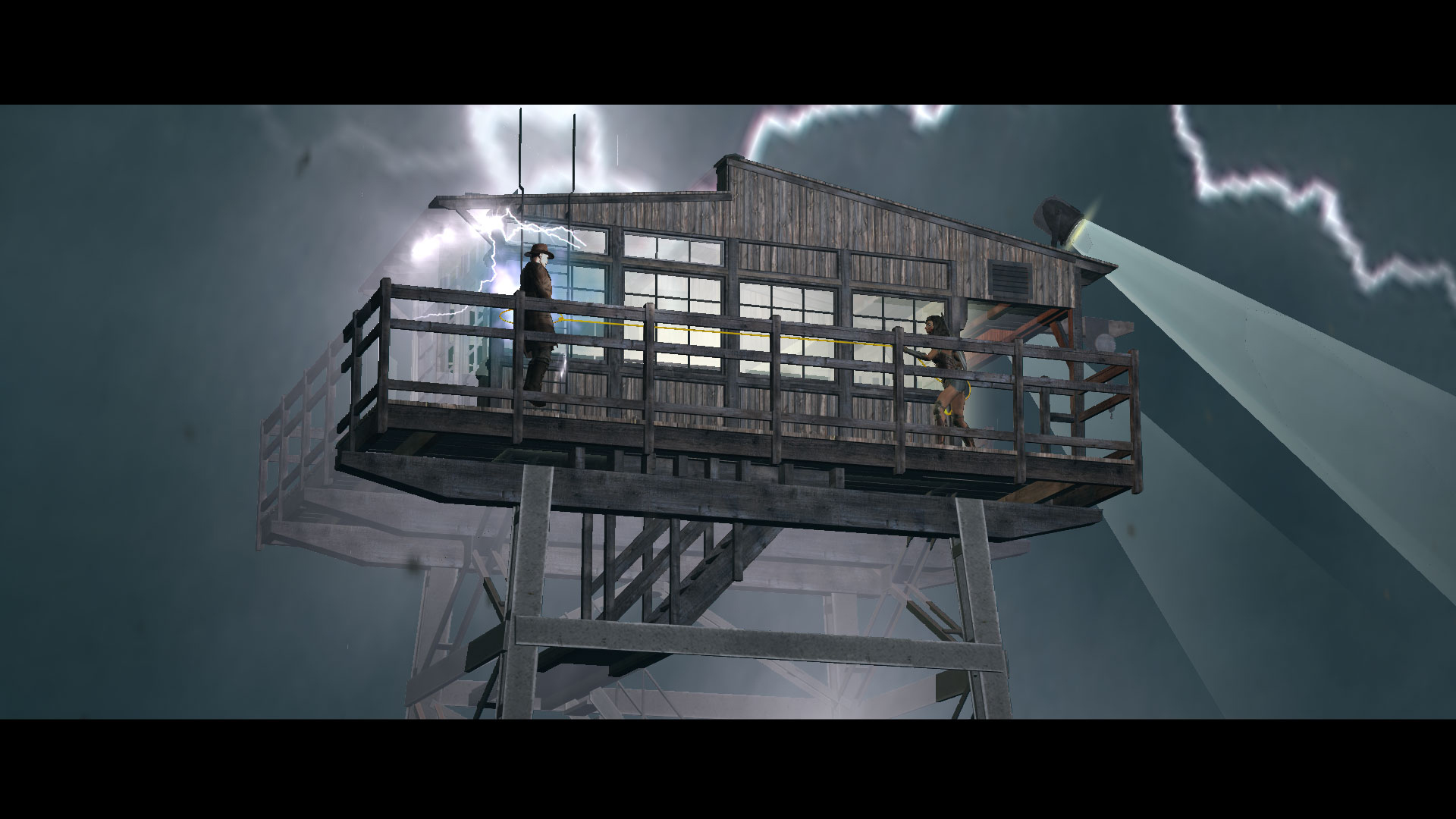
HULLFISH: Talk a little bit about developing sequences as a previs editor. Before the main picture editor starts, previs editors are the editorial eyes of the picture while working with the people making the previs scenes.
MAJDIK: The job of a Previs Editor is a relatively new role and our job is often misunderstood or confused with that of a Picture Editor or VFX Editor. We work for the vision of the director through the Previs Supervisor and the VFX Supervisor, and we start months — sometimes a year — before principal photography begins, testing out visual concepts and story ideas. As a department, we help design challenging sequences that require a huge amount of planning and forethought. As editors, we ensure that the team’s work always serves the story.
FEVER: Let’s explain the process from the top, who we have in our previs department and what they do.
CALDWELL: The previs team starts months before the cameras start rolling, often before the script is finished. The Third Floor is awarded a certain number of scenes and production hires a previs supervisor who usually works under the visual effects supervisor. Next, The Third Floor assembles a team of asset builders. They start building the 3D environments, objects, and characters, working closely with the art department.
FEVER: Then the shot creators join the team and they place those objects in the 3D environment, animates the objects and characters and then — crucially — animate the camera inside that environment. That includes making decisions about shot composition, the way the camera moves which lens to use, and what is in focus. And then what we get is essentially a recording of that camera.
CALDWELL: In my experience, the previs editor starts maybe a week later, when there’s already shots that have been created. We just get in there and start cutting the shots together as we see fit.
MAJDIK: On a big show, we could get up to a hundred fifty shots a day sometimes.
CALDWELL: That’s almost like getting traditional dailies. That’s a lot of content, so we cut it together and start to add the sound and the temp music. Then, based on notes we’re getting from the client or if a beat’s not working, we add more shots and constantly nip and tuck things — moving temp score and sound around.
MAJDIK: The idea is to create a scene that is not only exciting but serves the narrative and the characters. That’s where we come in. We help the supervisors guide the cut into that direction. We also do a lot of temp work to guide the animators towards shots that have a good pacing and rhythm. The animators may give us a shot that is too slow or too long, which we will retime and pass back. Or even optical lens choices. “This doesn’t really work on a 100mm lens. I think you can tell the story better on a 30mm lens.”
CALDWELL: I find the thing I ask for the most is close ups, because the focus of our process in working out these big complicated action scenes is often a lot of really cool big sexy shots. It’s our job to get the drama of the scene across.
It is important to see someone’s face reacting. You need that emotional investment. So I’ll often take a pre-existing shot and just blow it way up. Just to show the CU as a proof of concept and get the supervisor to sign off on it.
MAJDIK: I think what’s important to know also, is if the team builds the virtual sets, they reflect almost 1:1 the real set. The cameras, lenses and cranes are precisely the ones that are going to be used on the real set. So if you see something in the previs you can get that shot on set with a real camera.
HULLFISH: Those 1:1 representations of the set are LIDAR-derived or something?

CALDWELL: Either LIDAR if it’s existing or we work very closely with the art department. So the art department will give us their virtual set or, if it’s not built yet, we’ll start with something and hand it to the art department and they adjust it. Then we adjust the previs to what they end up with. I just heard a story yesterday from one of our supervisors who said his foot is exactly 12 inches and he actually went to the set and walked it and brought those measurements back to us.
HULLFISH: This whole interview came about because of a discussion I had with the editor of Rampage who was talking about getting deep into the actual editing of the film and needing a VFX shot that was a close-up of the gorilla, but that he knew suggesting that close-up at that point meant an extra $60,000 to create the shot. That’s another consideration for you guys, right? How much something’s going to cost to create “for real.”
MAJDIK: Absolutely. It’s important to be mindful of budget constraints because sometimes even before the picture editor starts, these scenes go out for the bidding process, and you want those bids to be as close as possible. The closer we get to the final scene early on, the easier it is for production. In terms of actually thinking about how much a specific shot will cost, that’s more the job of the VFX department. We just try telling the best possible story until someone tells us our cut’s too expensive!
HULLFISH: So how else does previs editing differ from traditional editing?
CALDWELL: Unlike traditional editing, each shot is only a couple seconds long. The supervisor is designing this scene with a shot list. The supervisor gives you handles on the shots, but I don’t have the ability to jump out to the wide whenever I want. It’s like, this is the way the scene was intended and if it’s not working, maybe we suggest a shift here or a shift here. So it’s a bit different than live action editing in that sense.

collaborating with the directors, Marvel and production departments from visual effects to
stunts to editorial to help visualize and plan sequences throughout the movie.
DIFFER: Managing that and making sure that the animators are giving you a matching reverse shot. We try and make sure that the scene coverage is built as it should be shot, so that production don’t end up with all these random camera set ups that they won’t want to shoot on the day
MAJDIK: Usually, we just get shots with some handles, but sometimes we’ll use Virtual Production. Virtual Production is similar to what James Cameron used on Avatar where they animate complete scenes, go to a motion capture stage and pick up a camera and they can see the scene play out in front of them through a VR headset or virtual camera. In that case, they actually go in and shoot virtual coverage of the scene. It’s much closer to live action shooting and editing. I did a couple of films like that, which were a lot of fun because then you actually get dailies. As they shoot, you get them straight into Avid and you can edit and the director can say, “Okay, let’s sit down and look at what we have.” Then they walk over to the editor and says, “OK this is cool. Why don’t we try this angle?” And they can just pick up the camera and shoot the different angle. I believe this way of working will be a big part of visualization in the future.
HULLFISH: Tell us about getting to the point of requesting things: as you see a sequence coming together and you realize you’re not seeing what you think you need as an editor.
FEVER: The shots are passed from the shot creator to the previs supervisor for approval, and then passed onto me. I put them into the existing edit, and from there the feedback cycle is very immediate. The supervisor and I watch the sequence together, and discuss what is working, what isn’t working, what needs to change and why. Do we need more face time with our protagonist? Do we understand the objective and where the characters are both physically and narratively going? Are all the story beats clear? Is there any story or information getting lost?
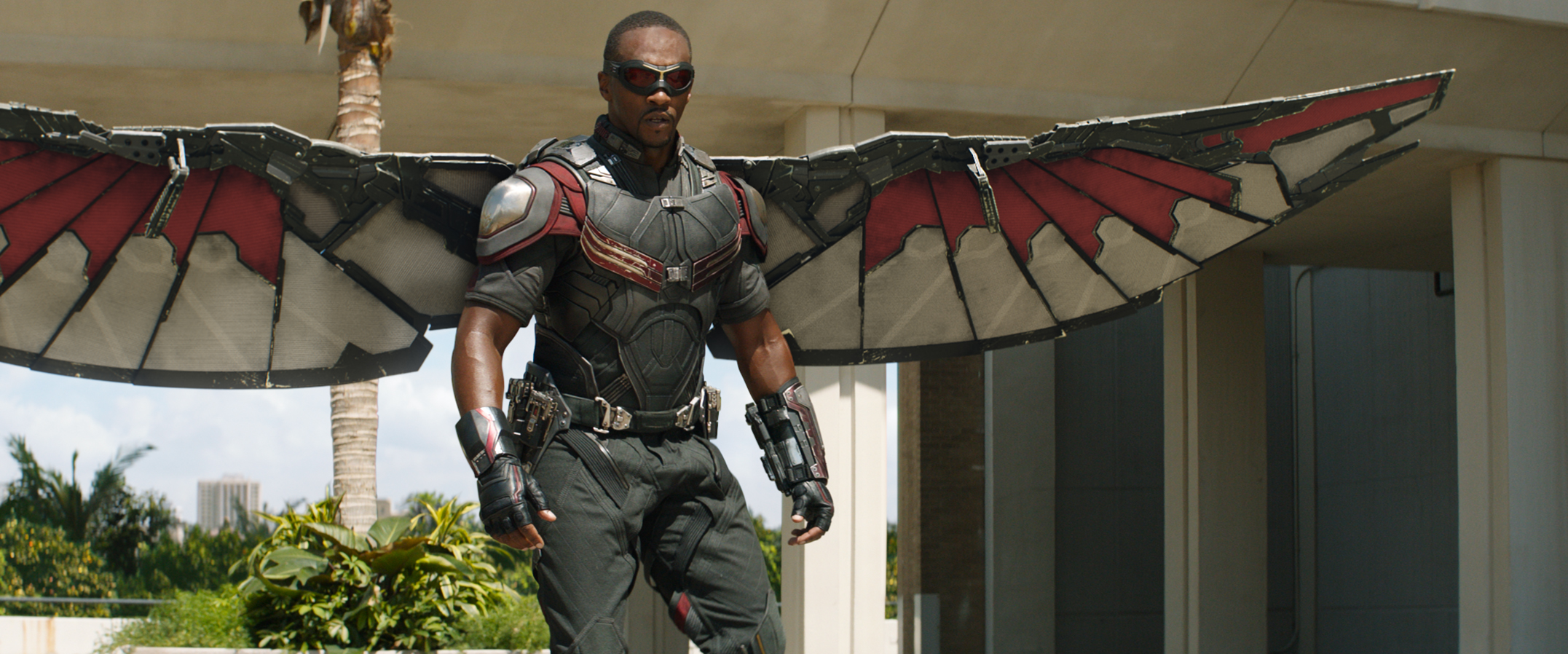
We then discuss this in terms of shots: Are all the shots in terms of blocking and composition serving our story needs? Do we need a wider shot to show x? Do we need an additional shot to remind us of y? Should we add a reaction shot to punctuate z? Our eye trace is guided by movement, so should we change the timing of the blocking in the wide shot so the audience’s eye is better guided to where we want it to be? Do we really need two shots here when this one will achieve the same thing?
The previs supervisor then decides what is important and assigns that work back out to the shot creators, who supply new shots and we go through that feedback process again. We do this several times a day. We are constantly redrafting and asking ourselves “what isn’t working, what isn’t serving the story?”.
DIFFER: You need to understand not just the storytelling aspect, but also you need to understand camerawork, you need to understand composition, you need to understand a range of other things that don’t normally come into the editor’s realm. And we work at a very fast pace – a scene can change dramatically over the course of a day.
FEVER: Yes, it really can, so you also need to keep an eye on the effect of those changes on the surrounding shots. A good example of this is when me and the previs supervisor had reshuffled a chase sequence, and a front-on shot of the protagonist that had previously made a lot of sense, had now lost its meaning and felt surplus because of where it now fell in the sequence. Instead of losing it, which is the temptation, I suggested adding a looming shadow of the structure the characters were moving towards which we were about to reveal in the following shot, which then gave the front-on shot a new purpose because it gives the audience a clue that we’re about to see a new obstacle and that its of considerable size. Literal foreshadowing!
 As the previs editor, it’s also important to be mindful of what the focus of the shot is, and where the audience will be looking. It’s not enough to just include all the information in the frame, you need to signpost what is important for the audience to focus on. And you guide that with movement. If there’s a lot going on in the shot, eye trace becomes very important, and working out subtle ways to guide it without being Hitchcockian about it. Recently, we used a secondary character running later through the foreground to guide the audience’s eye from the action on screen left to the action on screen right. That’s all in the timing.
As the previs editor, it’s also important to be mindful of what the focus of the shot is, and where the audience will be looking. It’s not enough to just include all the information in the frame, you need to signpost what is important for the audience to focus on. And you guide that with movement. If there’s a lot going on in the shot, eye trace becomes very important, and working out subtle ways to guide it without being Hitchcockian about it. Recently, we used a secondary character running later through the foreground to guide the audience’s eye from the action on screen left to the action on screen right. That’s all in the timing.
As Ian said, we may also have suggestions for shot sizes, camera angles and camera placement. So an awareness of what the different size lenses do is quite important. It’s quite a big difference to go from a 50mm to a 20mm. And even small lens differences — like switching from a 20mm to a 27mm – will be effective if you want to crop out a bit of the action and focus attention in the right place.
HULLFISH: To help out some people who might not know the effect of a lens choice, they might think that going from a 27 to a 20 would mean you just want a wider shot. However, the lens choice affects how action moves across the screen, the depth of the shot and the way the foreground elements seem closer or further from the background. So, these decisions are not simply matters of closer or further away.
FEVER: Mainly though, I’d say you need to know film grammar so you understand when you read a script that, for example, this beat would be best suited to a wide shot, or a medium shot, or a close-up. So, when you’re looking at a sequence that’s already assembled you are able to see if something doesn’t work because it’s in the wrong shot size or on the wrong lens. As previs editors we need to understand what’s needed before we see it in the sequence. That’s different from the editing I’ve done previously where you have as much as you’re going to have at the beginning of the editing process and from there it’s a case of whittling it down and molding it to tell your story — what you have is finite. But with previs editing, there’s infinite choice.

MAJDIK: And I think that’s the hard part. You have endless possibilities.
CALDWELL: Right. I feel like, every time I’ve cut live action it’s a puzzle, but your parameters are defined. You only have what you have to work with, but this is like an infinite puzzle. You can theoretically go in any direction and if something’s not working, you step outside your bay and ask someone to give you a shot and ten minutes later you have it.
MAJDIK: And that’s why it’s important to come back to what serves the story. Is this shot just cool or does it actually serve the story? Our job is to help shepherd the team towards a cut that best serves the story and characters. In terms of finite options on live action features, that’s also slowly changing. Some of these big effects movies are basically 30% animated these days. With the help of our team, a picture editor can still change quite a bit after shooting has wrapped. And, of course, we can come into that process to assist with that.
FEVER: I had the incredible privilege of talking to Walter Murch about previs and he explained that his philosophical conflict about the process which can potentially span pre-production, production and post-production is that at each stage there needs to be a resurrection. You write the script, then kill the script in the act of shooting. You kill the shoot and resurrect the film with the edit. This wonderful insight was inspired by a quote from French Film Director Robert Bresson who said “My movie is born first in my head, dies on paper; is resuscitated by the living persons and real objects I use, which are killed on film but, placed in a certain order and projected onto a screen, come to life again like flowers in water.” I’m inclined to agree with him!
HULLFISH: I think the really interesting thing you pointed out there is the context changes. You think you’ve got this great scene but then would you put it next to the scene in front of it or behind it, now your scene has to change no matter how good the scene is.
 MAJDIK: Correct. Sometimes it’s heartbreaking because you can spend months noodling on a sequence, only to have it dropped entirely later in the process. If you work in visualization, you better have zero ego when it comes to your work. The nature of the process is constant change. But that’s what makes it such a fantastic learning experience.
MAJDIK: Correct. Sometimes it’s heartbreaking because you can spend months noodling on a sequence, only to have it dropped entirely later in the process. If you work in visualization, you better have zero ego when it comes to your work. The nature of the process is constant change. But that’s what makes it such a fantastic learning experience.
HULLFISH: Siân, I was really interested in your story earlier about character running through the foreground and using that to guide eye trace. As an editor with dailies of shot footage, that’s something you notice and might select, but you’re actually helping to have an influence on those choices.
FEVER: Yes, I think that’s a really cool aspect of working in previs. I think the best thing though, is that you have the opportunity to throw an idea out there and then within hours, you get that idea back in previs form and see if your idea works or not. You go through so many drafts, at quite a rapid pace, and you learn so much through that process. I don’t know if there’s another opportunity in post-production to so relentlessly test your ideas out as an editor. Instead of saying, “Oh, I wish I had that,” and moving on, in previs, you can say, “I wish I had that” and it could be on the server in a couple of hours ready for you to see if you were right or not. It’s a creatively exciting environment to work in for that reason.
HULLFISH: Tell me about the responsibility of operating the Avid during the review sessions.
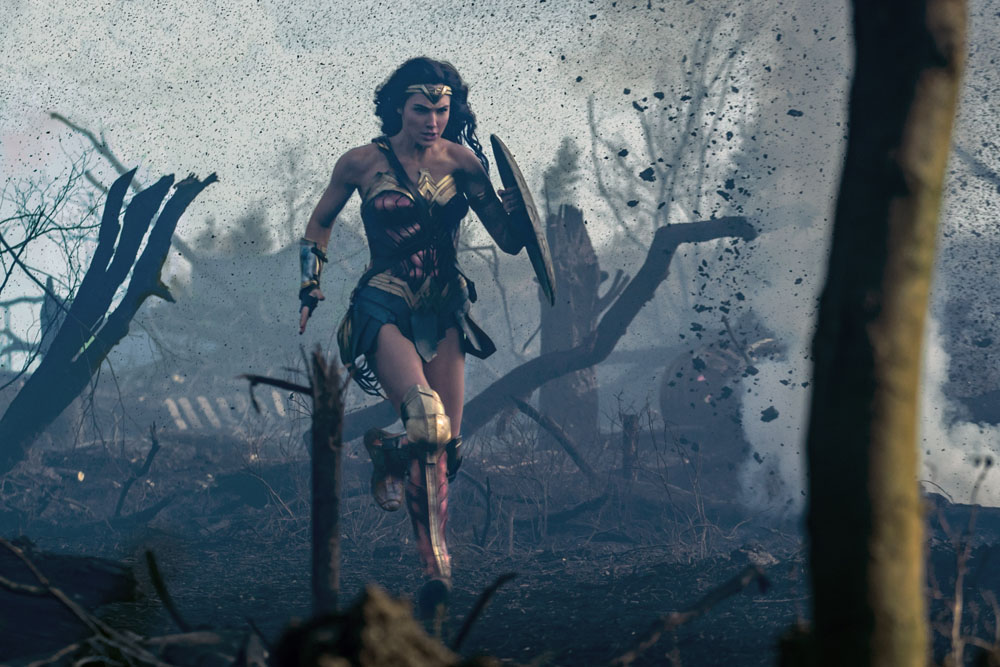 FEVER: Since I am the previs editor, I will always operate the Avid in previs reviews. Those meetings happen in my edit suite, so the Director and the VFX Supervisor come to us. On my last production, my office was along the corridor from the VFX Production Manager, the VFX Producer, the VFX Supervisor and the VFX Editor. We also had the war room nearby which is a big meeting room with concept artwork all around it so we’re very much in the thick of it. We have a whole range of people coming through the edit suite. The VFX Supervisor is our main point of contact, but we also have visits from the Director of Photography, the Second Unit Director, the Storyboard Artists, the Art Department, the 1st AD and Executive Producers too.
FEVER: Since I am the previs editor, I will always operate the Avid in previs reviews. Those meetings happen in my edit suite, so the Director and the VFX Supervisor come to us. On my last production, my office was along the corridor from the VFX Production Manager, the VFX Producer, the VFX Supervisor and the VFX Editor. We also had the war room nearby which is a big meeting room with concept artwork all around it so we’re very much in the thick of it. We have a whole range of people coming through the edit suite. The VFX Supervisor is our main point of contact, but we also have visits from the Director of Photography, the Second Unit Director, the Storyboard Artists, the Art Department, the 1st AD and Executive Producers too.
HULLFISH: Tell me about the input that you did include as an editor or felt like you could provide and what was your role in this early meeting where there was nothing yet to edit?
FEVER: For me, personally, in a meeting with the director, it is my job was to operate the Avid and/or soak in as much information as possible to later bring to the creative process. The director’s time is precious and the that time needs to be used efficiently. So aside from operating, I’m there to listen. If there was something I wasn’t clear about I would wait and voice it to the previs supervisor afterward.
HULLFISH: The amount of social understanding that you need to have as an editor reading the room, knowing when to shut up, knowing when to be patient, that’s just a huge thing. I respect you wanting to hold back, or knowing that you should hold back.

FEVER: Being sensitive to the situation will serve you well. Meetings with the director would not be an appropriate time for me to voice my opinion. That’s not the time for me to say something to try and make myself look smart.
During a creative meeting with the VFX supervisor? Yeah. Absolutely. Chipping in after everyone has had their say, if you think something hasn’t been covered or something might be missing. I think that that’s an appropriate thing to do. It’s also important to know when to step in and say, “I think we do need to take another look at this.”
As editors we are good at empathizing with the characters in our stories. Empathy is a word that underpins a lot of what we do. I think successful client meetings and working relationships also rely on you having a strong sense of empathy with those around you.
And how about empathy with yourself? There’s a great video online about the science of editing and the way your two brains interact with each other — the one feeling the material emotionally, and the other that’s noticing that you’re feeling something and cataloging it.
HULLFISH: Yes! I love the Science of Editing videos… Sven Pape and Dr. Karen Pearlman. I actually wrote a 6000-word essay on the thoughts and insights that that generated.
FEVER: Once I became aware that that was happening — that I could experience something and watch my experience simultaneously — and that would give me clues about what I needed to change, I tried to pay more attention to that voice and nurture it. And, I found that the louder that voice gets, the better the ideas get.
HULLFISH: Are there any movies that you guys have worked on that we might be surprised had previs?
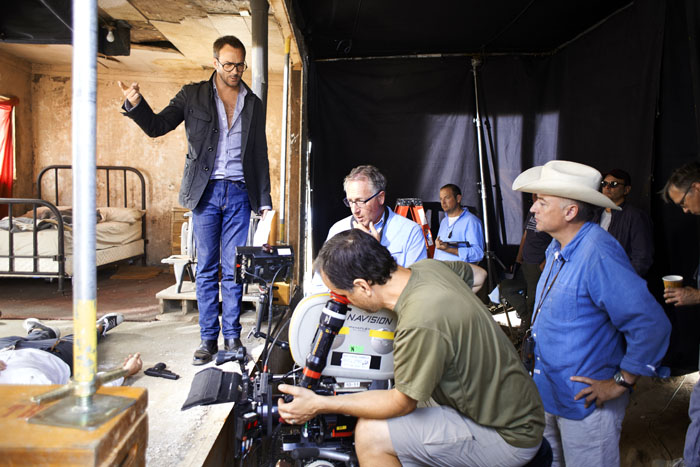
MAJDIK: Game of Thrones is heavily prevised.
CALDWELL: Nocturnal Animals.
HULLFISH: I saw that movie and interviewed the editor. That is definitely surprising.
CALDWELL: Mostly big features. Not a ton of TV, really, though that’s changing a little bit.
DIFFER: Especially with Netflix and Amazon.
MAJDIK: The budgets are getting bigger in TV.
CALDWELL: One thing we just did previs on was The Tyrant opening.
HULLFISH: How much are you guys needing to build sound beds and do temp music?
DIFFER: They can be very complete. Some of it is very dependent on the director as to what they want to hear or not hear. Some love us to do scratch dialogue as well as effects and temp music. Some don’t want anything. Some want just effects.
MAJDIK: Sometimes it’s tricky because I know the picture editor prefers a certain style of music or a specific composer, but the VFX supervisor enjoys the complete opposite of that. In those cases, I often try to please both but, in the end, the VFX supe is my boss and I will temp score the sequences according to his taste. Generally, I go with my gut and my instincts.
DIFFER: I’m sure you guys are like me. It’s a fun part of the job is recording scratch dialogue and really filling out the sound underneath. I worked with Rian Johnson on Last Jedi and he directed the recording of scratch dialogue while building scenes. That was great because he directed the performances. It really helps you get into the scene.

The Last Jedi, working with the filmmakers, Lucasfilm and Industrial Light & Magic to
visualize key scenes, help develop technical shooting approaches and map out
storytelling action.
MAJDIK: In the movie I’m working on right now, I think I have about 60 minutes worth of previs and all of it has temp sound and score. One of the reasons for that is that the VFX supervisor likes it that way, but sometimes it’s a selling tool as well. They have to show these scenes to the executives at the studios and they tend to react better to a scene if there’s a bit of music.
CALDWELL: Yeah. In fact, you’re reminding me: when I first started here eight years ago I remember one of the reasons why we actually weren’t using Avid was because we just needed more audio tracks. Avid only had 24 audio tracks back then and we couldn’t do it with that. When I first started, we were doing 40, 50, 60 tracks of audio. There were just so many sound effects.
MAJDIK: Now I’m down to 12 or 13 max. There’s a limit to what we can do. We’re a one-man-band. We don’t have the usual editorial support.
DIFFER: Yeah. We’re the editor and the assistant.
MAJDIK: We’re constantly recutting the scene. We’re constantly doing turnovers. Constantly screening it to artists on our team, to the VFX supervisors and then you have to do full sound and also keep that up and in sync. It’s a lot of work.
HULLFISH: What is the value? What is the money being saved? Because clearly a studio is looking at the expense that you guys incur and realizing that they’re getting a value in the production.

MAJDIK: Every day on set is intensely expensive on these big movies. For the directors, previs is a sandbox. For months they can experiment and spend time on the virtual set and figure out a scene. We also break it down in so-called Tech-vis for them. Once a scene is locked, we make a diagram for each shot that shows precisely how it needs to be executed on the real set. This is where the dolly moves. This is the lens you need to use.
This is the height of the camera. Every single department knows precisely what’s being shot on the day and precisely what’s needed. It really speeds up the process. And it gives time on the creative level to perfect the scene before you even walk on set. Obviously, things will change, but you know that this scene works because it works in previs. Producers have seen it and signed off, the picture editor has hopefully seen it and made his adjustments to it. Everyone has signed off on it.
DIFFER: Hopefully it allows you to possibly stay on schedule. You don’t need to come back for tons of reshoots or pick ups because you got everything because of the previs and the shot list from that. Bill Condon on Beauty and the Beast did a lot of previs but he also used a lot of animatics and a lot of rehearsal videos, so he had pretty much the whole movie before he started shooting. Every night he would go back and he would look at what he’d got that day and he was constantly using the previs to fine tune what he was going to shoot. This saved them from doing lots of reshoots and pickups, and that’s a ton of money saved.
HULLFISH: I wonder why more films don’t realize a financial advantage in doing it.

MAJDIK: I think once this goes more mainstream and maybe becomes more affordable. You don’t have to do the previs on our level with nice lighting and rendering and everything. You could do it on a more minimal level. You don’t have to animate the characters. They could just be chess pieces floating around. I think it would be great for indies.
DIFFER: If you are going on location and you know you only have two days there, you want to know what you need to shoot. You don’t want to try to figure it out when you get there.
MAJDIK: For independent films, money and time is even more precious. I think it’s a great tool that most people are not aware of outside the big Hollywood studio system.
HULLFISH: Do you guys love it when you see the final movie and some of your timings are still there, or you can see stuff that you did kind of make it to the final movie?
MAJDIK: There’s two ways to look at it. Both of them are great and satisfying. If it’s the same as in the final movie, it’s amazing, job well done. But if it’s completely different, then first there may be a little bit of disappointment, but it’s still fantastic because then I can look at it and analyze: Why is it cut like that? So I always enjoy watching the final movie. This is a highly collaborative job, things change on a weekly basis and we all aim for one thing: To make the film as good as possible.
HULLFISH: One of the reasons why this whole conversation about previs came up in the first place was because of editors I’ve interviewed talking about that they still needed to use that previs in their edits. I was talking to Jeff Ford about Avengers and so of course, if he’s got a close-up of the real Robert Downey, Jr., he’s not going to use the previs shot of him, but if it’s a shot of Ironman flying through the sky and the VFX house hasn’t delivered anything yet, then he’s going to use the previs as a placeholder for that shot.

FEVER: Absolutely. The previs edit can be put to one side, and since the previs single shots get delivered separately to the editor, they can use them as part of their process too.
HULLFISH: I wanted to get back to the idea that you can’t really just cut in 60 different angles for a scene because that means that they have to shoot 60 set-ups. So let’s discuss your responsibility — and obviously the supervisor’s responsibility — to make this practical on set, because inside of Maya, you can move the camera anywhere and do anything.
DIFFER: The question of the “magic camera” comes up doesn’t it? I’ve found with the last few films I’ve done, that there’s definitely been a trend to come away from them. Even if it is a CGI camera, the directors and DOP’s generally want it to look like someone could stand there and get that shot.
CALDWELL: The last show I was on if there was anything questionable — like, “How’s a cameraman going to do that?” they wouldn’t allow it.
MAJDIK: Everything has to be grounded in reality and doable.
CALDWELL: As Ian said, that’s really dictated top-down by the director. It’s really hard to describe the difference between a magic camera and one you could actually do, but you can feel it in a movie when you could never film that.
MAJDIK: Especially because these scenes are so crazy. Superheroes are flying around and if the filmmaking is grounded in reality, it’s more acceptable, more believable. We also watch out for the right amount of coverage. We aren’t at the stage in the editorial process where we want to cut it down to the bare minimum.
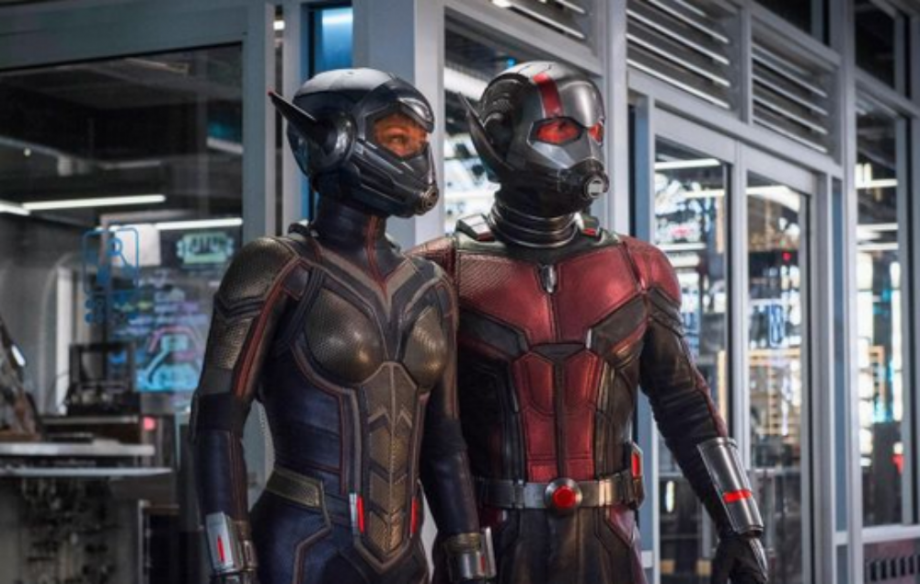 HULLFISH: This just occurred to me, but if a director wants to shoot a sequence or part of a sequence hand-held, do you guys do motion-capture or something to make the camera feel like it’s handheld on previs?
HULLFISH: This just occurred to me, but if a director wants to shoot a sequence or part of a sequence hand-held, do you guys do motion-capture or something to make the camera feel like it’s handheld on previs?
MAJDIK: Yeah, the animators have a tool for that. You can push some buttons and adjust some levels and it becomes hand-held. They use that that a lot actually.
CALDWELL: We’ve got hand-held tracking effects. Sometimes I’ll do a hand-held tracking thing in Avid if it’s not shakey enough. I’ll just track a shot that is hand-held in another movie that feels right and apply that tracking to my previs. Then you’re actually emulating that hand-held for real.
MAJDIK: But 99 percent of the time that comes from our animators.
HULLFISH: Anything else you guys feel like people should know about what you do?
MAJDIK: We are not visual effects editors.
HULLFISH: I know the difference between the two, but I made that mistake when I first contacted Siân. A VFX editor works with the editor on his team and basically handles the turnovers between the picture editor and the VFX houses — making sure they have the right data and plate and foreground references, then getting their work back into the timeline properly,
DIFFER: What we do is part of the process of building a film, making a film. And sometimes what you do ends up on there, sometimes it doesn’t. But it’s still fun and you get to work with fun people and the more the directors and the other heads of department involve themselves with what we do, the more successful becomes. And it’s more likely it will end up being in the film.
 CALDWELL: The other thing I think that is maybe not known is that on some of these big movies we actually are sitting with the director and working on the vision of the film before the picture editor starts. Our goal is to ultimately set up the director and the picture editor for success, so any of the grunt work we can do up front will hopefully trickle down to time saved for the picture editor. We’re in a very unique role where we have the ability to use our expertise at such an early stage in the process and have a voice.
CALDWELL: The other thing I think that is maybe not known is that on some of these big movies we actually are sitting with the director and working on the vision of the film before the picture editor starts. Our goal is to ultimately set up the director and the picture editor for success, so any of the grunt work we can do up front will hopefully trickle down to time saved for the picture editor. We’re in a very unique role where we have the ability to use our expertise at such an early stage in the process and have a voice.
HULLFISH: But then you have to wait so long before you can see the movie!
DIFFER: I have to say that I miss that, because I spent 20 odd years being an assistant or a visual effects editor or cutting a few films and not being in those final months where it’s all coming together and you see everything coming together for the first time, I do miss that.
CALDWELL: When I was working in features, once the we were done editing, we were done. When you’re done in previs, the shots, scenes and edit assemblies of the action are still a work in progress as we hand them over to the picture editor. It never really feel like you’re finished.
HULLFISH: I love that idea of the tabula rasa — blank slate — at least when you have dailies, you’re somewhat locked in and you know, “This is what my movie is made from.”
MAJDIK: Endless possibilities. Luckily our supervisors and our teams are world class. They know how to focus the work on what matters. Some of these supervisors would be good directors. Luckily, we’re surrounded by really good people.
We try to create as good of a base as possible so the director and picture editor gets hopefully the best possible footage and coverage. If we have done that, we’ve done our job.
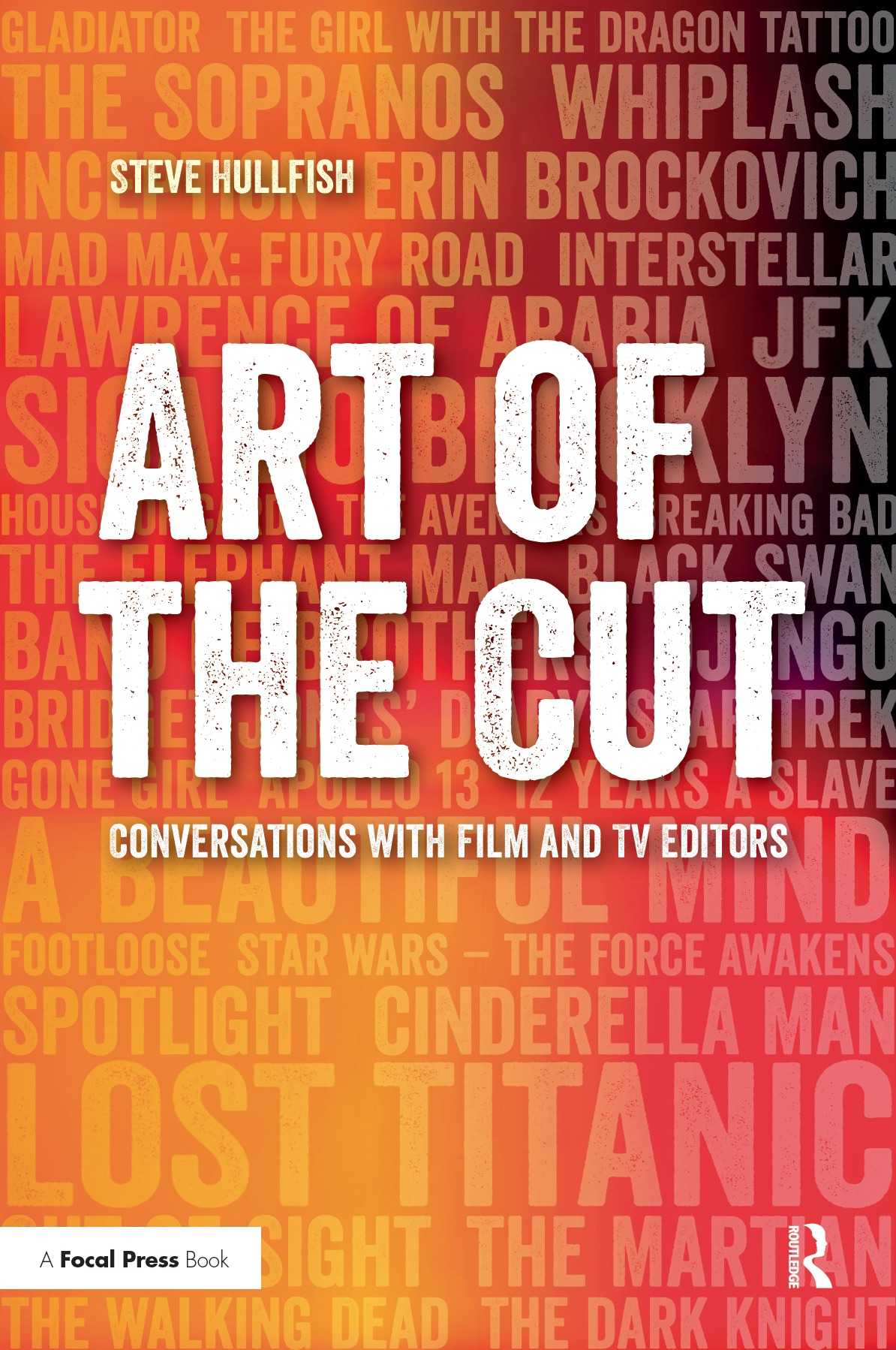 Some additional exclusive questions and answers are set to be available on the Frame.io website via the Frame.io Insider.
Some additional exclusive questions and answers are set to be available on the Frame.io website via the Frame.io Insider.
To read more interviews in the Art of the Cut series, check out THIS LINK and follow me on Twitter @stevehullfish
The first 50 interviews in the series provided the material for the book, “Art of the Cut: Conversations with Film and TV Editors.” This is a unique book that breaks down interviews with many of the world’s best editors and organizes it into a virtual roundtable discussion centering on the topics editors care about. It is a powerful tool for experienced and aspiring editors alike. Cinemontage and CinemaEditor magazine both gave it rave reviews. No other book provides the breadth of opinion and experience. Combined, the editors featured in the book have edited for over 1,000 years on many of the most iconic, critically acclaimed and biggest box office hits in the history of cinema.

Filmtools
Filmmakers go-to destination for pre-production, production & post production equipment!
Shop Now








